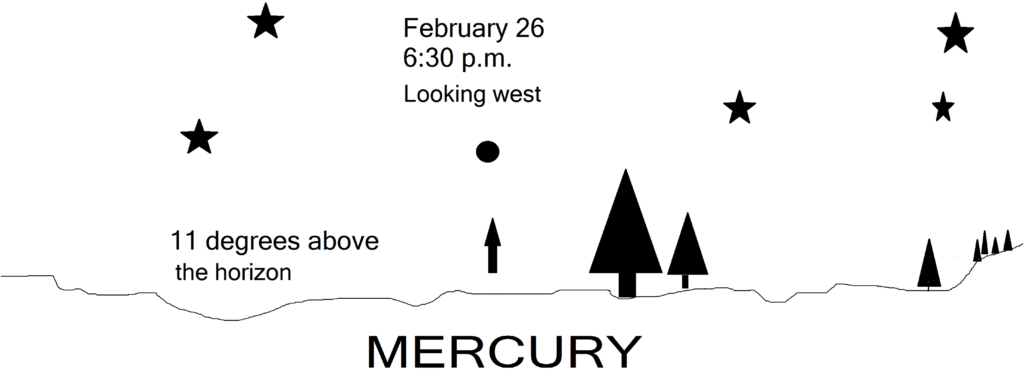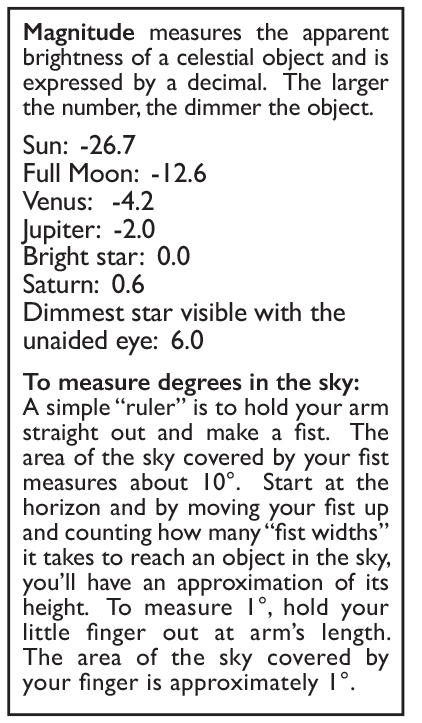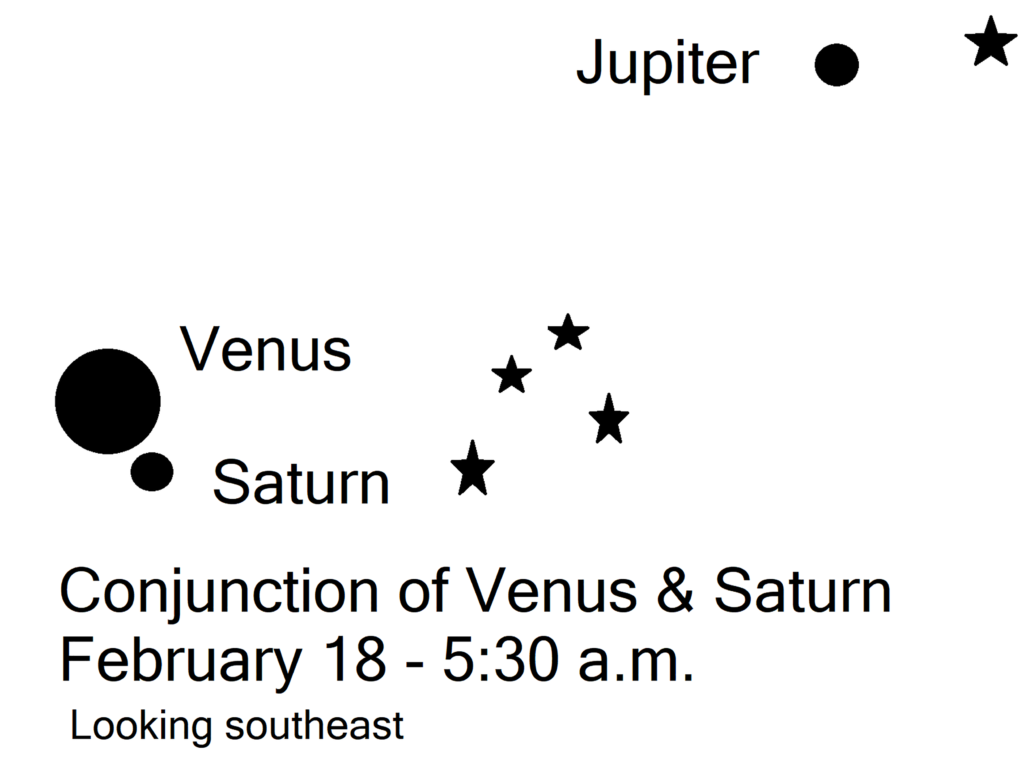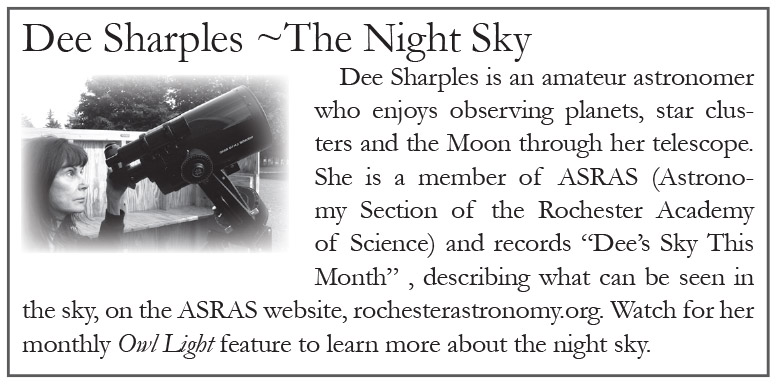The Night Sky: February
by Dee Sharples –
Exploring Mercury
Mercury is the smallest of the eight planets in our solar system and also the closest to the Sun. It races around the Sun in only 88 days while it takes the Earth 365.25 days to make the same trip. A day on Earth is 24 hours long while Mercury rotates very slowly, and one day on this tiny planet lasts 1,408 hours!
In February, you can see this fast moving planet naked eye in the early evening sky just after sunset. On the 15th of February, the planet shines brightly at magnitude -1.1. But because it lies only 5 degrees above the horizon, you’ll need an unobstructed view toward the west-southwest to spot it looking like a bright star. Mercury will climb higher each evening and by the 26th, it will be at its highest point in the sky for the month at 11 degrees, or about one fist width above the horizon. Although it will have dimmed to magnitude -0.5, it will still be easy to spot at twilight about 30 minutes after the Sun sets.

Astronomers didn’t know what the surface of Mercury looked like until 1974 when the NASA spacecraft Mariner 10 arrived at the planet. Ground-based telescopes only showed a bright disk-shaped object which went through phases like our Moon. This spacecraft was programmed to fly by the planet three times to take images of its surface and surprisingly found it to be heavily cratered.
Another NASA spacecraft named Messenger became the second mission to reach Mercury and entered orbit around the planet in March 2011, the first ever to do so. It mapped the entire surface of Mercury as well as studied its magnetic field and interior structure.
To celebrate the 10th anniversary of its launch, NASA has released a short movie of a Messenger flyover.
 Three planets will provide some special observing opportunities in the early morning hours. Venus, Saturn, and Jupiter can be found in the southeastern sky all month, but on February 18th, around 5:30 a.m., Venus and Saturn meet up in the sky in a close conjunction with Venus passing about 1° above Saturn. Hold your little finger at arm’s length toward the sky to estimate this measurement. The space covered by your finger is roughly 1°.
Three planets will provide some special observing opportunities in the early morning hours. Venus, Saturn, and Jupiter can be found in the southeastern sky all month, but on February 18th, around 5:30 a.m., Venus and Saturn meet up in the sky in a close conjunction with Venus passing about 1° above Saturn. Hold your little finger at arm’s length toward the sky to estimate this measurement. The space covered by your finger is roughly 1°.
Conjunction is a term astronomers use to describe two objects in the sky which appear to be very close to each other. Although Venus and Saturn will look like they lie very close together in the sky, it’s actually just our perspective from Earth that creates this illusion. In reality Venus will be approximately 93 million miles from Earth, while Saturn will be about another 10 times farther away. Jupiter, looking like a bright star shining at magnitude -2.0, will lie above and farther to the right of these two planets.
A crescent Moon passes just above Jupiter in the early morning hours of February 27th, a beautiful sight as well as providing an easy way to locate the largest planet in our solar system.
